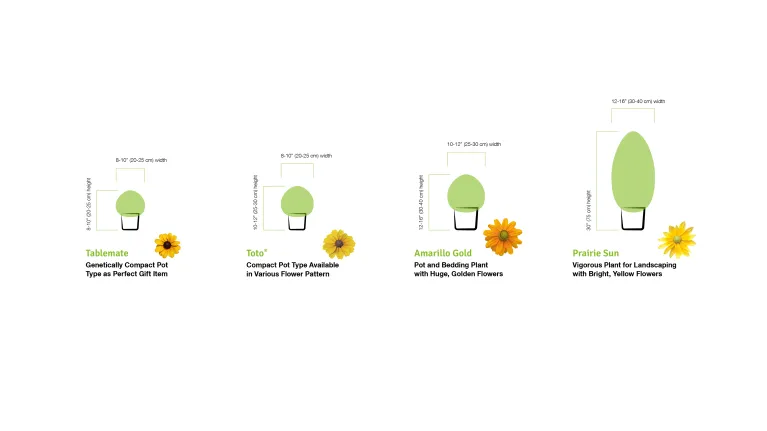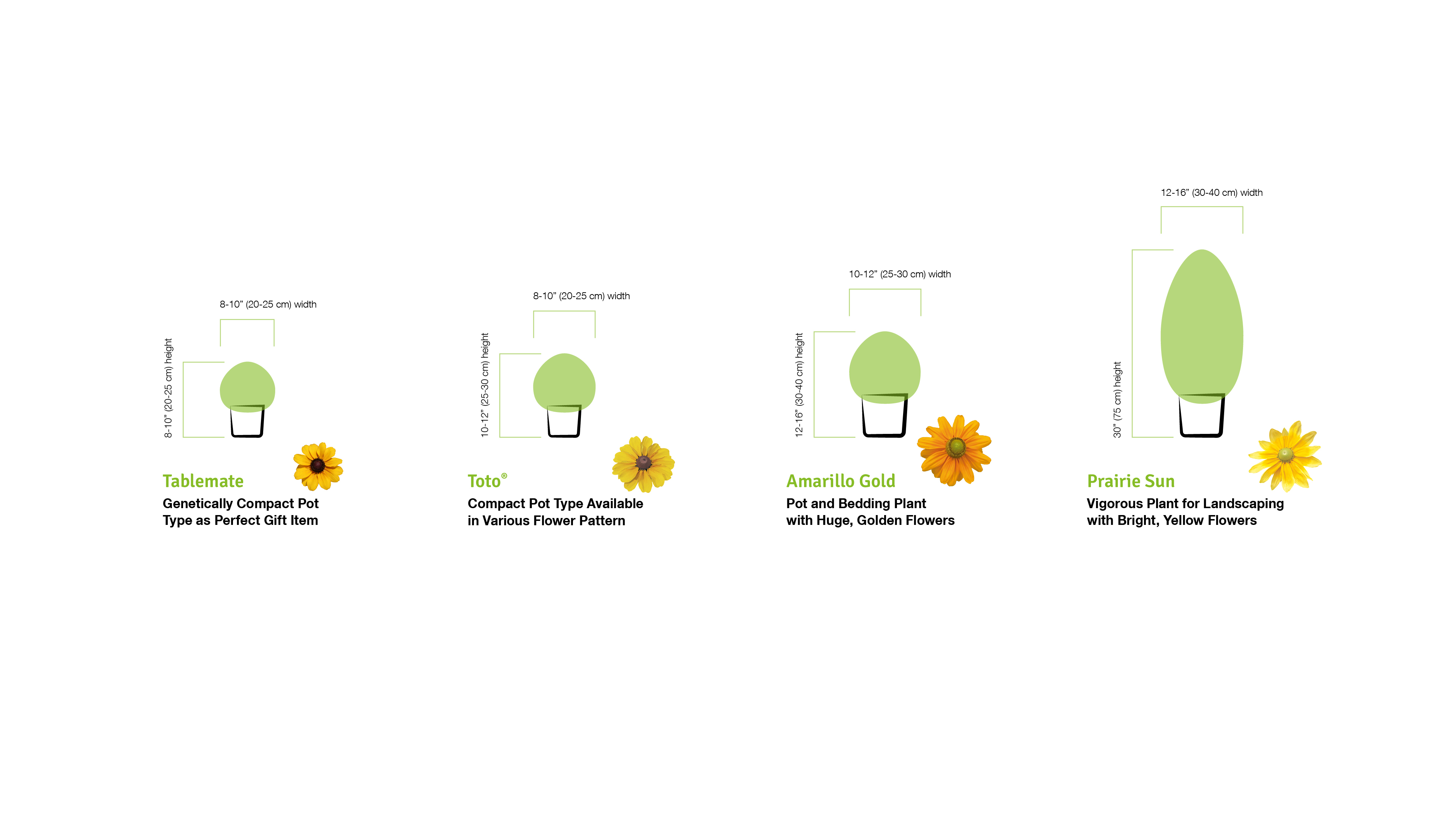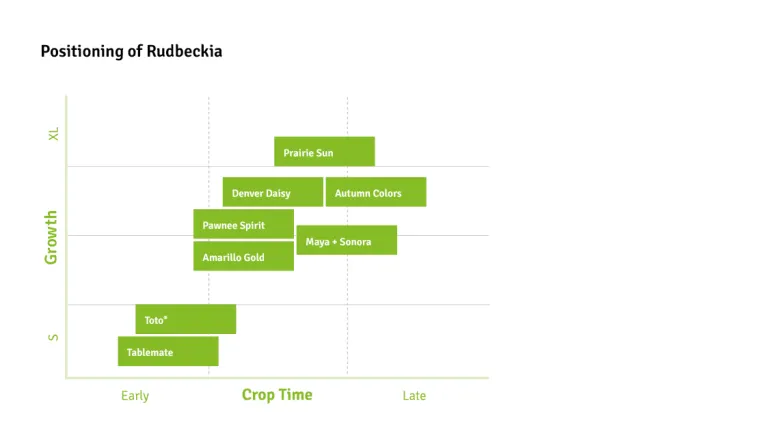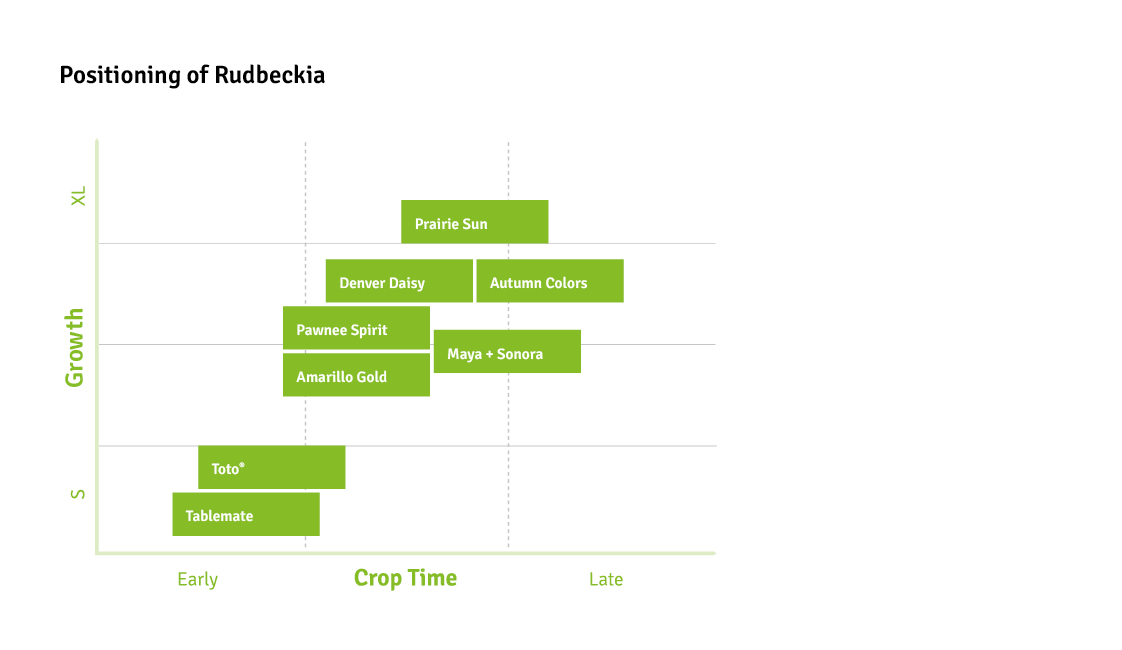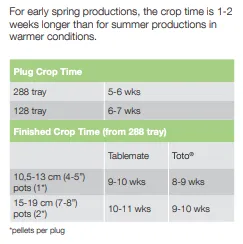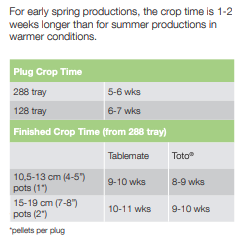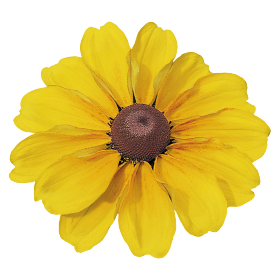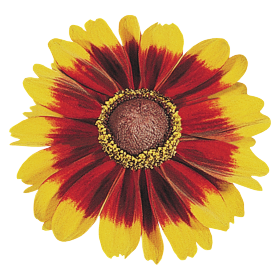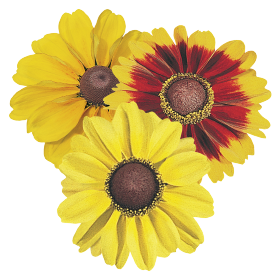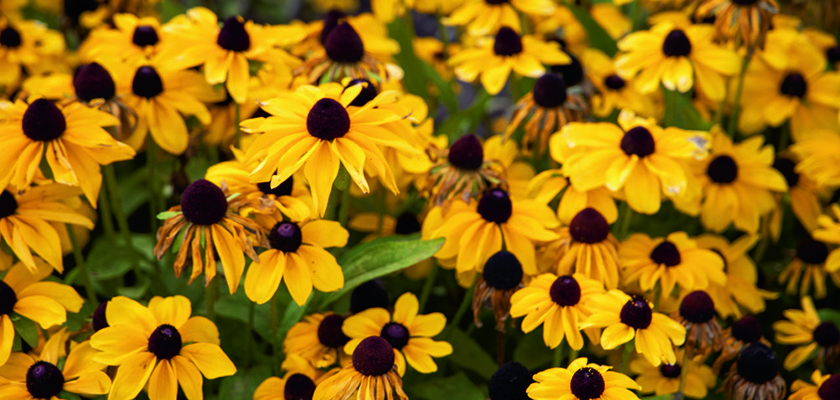
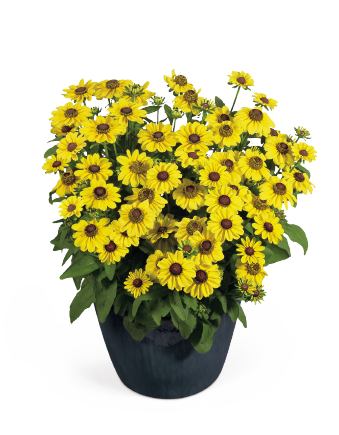
Toto® Lemon
Item no.: RH0101P- Compact pot type
- Huge amount of small, bright flowers
- Early flowering
- Crop Time
- Spring: 14 - 16 weeks , Summer: 12 - 14 weeks
- Height ∅
- 9 ″ / 23 cm
- Width ∅
- 11 ″ / 28 cm
- Flower Size ∅
- 2 ″ / 6 cm
- Exposure
- Sun
- Seed Form
- BeGreen Pelleting
- Product Use
- Gift Item, Pots, Containers
- Family, Origin
- Asteraceae, North America
- Minimum Germ. Rate
- 80%
Technical Guide
Flowering Type: Obligate long day plant. Long days with higher light intensity result in faster flowering.
Flowering Mechanism: Flowering is affected by day length. A day length > 14 hours will result in flower initiation.
Germination: Optimum conditions for seedling development should begin on the day of sowing until radicle emergence. Expect root emergence in 5-8 days, depending on temperature and moisture.
Cover: No cover is necessary however a light covering of vermiculite will aid in maintaining proper moisture and humidity levels during germination.
Sowing method: 1-2 seeds per plug, depending on the pot size. Direct sowing into final pot is also possible.
Media: pH 5.8-6.2. EC <1.0.
Temperature: 20-22 °C (68-72 °F) night and day.
Moisture: Begin with a moisture level slightly higher than a wet (4) until root emergence has occurred. Then begin to dry back the media slightly. Alternate between a moisture level wet (4) and medium (2) to prevent root rot diseases.
Humidity: 95-100 % until radicle emergence, then reduce to 40-60 %. Provide proper ventilation and horizontal airflow to improve oxygen levels in the media.
Light: Supplemental lighting is not required, but beneficial for the germination phase. For the first 4-5 weeks, keep the day length less than 13 hours to keep the seedlings from premature flower initiation. Provide light levels of 2,500-4,500 ft. candles (25,000-45,000 lx).
Fertilizer: Maintain an EC < 1.0. Begin feeding once germination is complete. Fertilize with a calcium-based fertilizer 14-4-14, 17-5-17 or similar at 50 ppm N.
Plug Bulking and Flower Initiation: Maintain optimal conditions during the vegetative stage from cotyledon expansion to flower initiation.
Growth Regulators: Do not apply PGRs or pinch the Tablemate plants, they are genetically compact. For Toto®, in the early stages B-Nine (daminozide) sprays at 1,250-2,500 ppm are very effective in controlling growth if needed. A morning drop in temperature of 3-5 °C (38-40 °F) is also very effective. Light sprays of either Bonzi (paclobutrazol) or Sumagic (uniconozol) can also be used.
Fungicides: Preventative sprays with fungicides should be done early to prevent diseases such as botrytis.
Media: pH 6.0-6.2; EC 1.5-1.75. Use a welldrained, growing substrate with 20-30 % clay, 2 kg/m³ complete balanced fertilizer, iron-chelate and micronutrients.
Light: To induce flowering supplemental lighting greater than 14 hours is needed or natural day length of over 14 hours. High intensity lighting is not required for long day extension.
Temperature: The plants like temperatures of 18-20 °C (64-68 °F) for optimal growth. Cooler temperatures of 16-18 °C ( 60-64 °F) support the uniformity and compactness of the plants, even if the crop time increases somewhat. Temperatures below 16 °C can cause red coloring of the leaves. Rudbeckia does not tolerate frost. An outdoor production is possible.
Moisture: Alternate between moisture levels wet (4) and medium (2). Allow the media to approach a medium (2) before resaturating to a wet (4) to provide oxygen to the roots and prevent root rot diseases. Dry plants quickly show chlorotic leaves and will not recover well from the permanent wilting point.
Humidity: 40-60 % humidity is ideal. Providing good ventilation and horizontal airflow will help lower the humidity, resulting in fewer disease issues.
Fertilizer: The plants require high fertilization levels to avoid yellow leaves. Fertilize with a well balanced calcium based feed, 14-4-14; 15-5-15 or 17-5-17 at 100-150 ppm N. Under higher light conditions occasional feeding with a higher nitrogen fertilizer can be used.
Growth Regulators: Tablemate will remain genetically compact. No PGRs or pinch is required to manage branching or height. PGRs may be used to manage flower timing. At high greenhouse temperatures, a soft spray of daminozide will keep the terminal flower stem shorter. For Toto®, light drenches with Bonzi (paclobutrazol) and Sumagic (uniconizol) are very effective. Approximately two weeks after plants are established in their final container and flower initiation has occurred, place them under short day conditions to shorten plant height.
Fungicide: Apply fungicides during long periods of low light and high humidity. In particular, preventive treatments against botrytis are essential.
Common Diseases: Botrytis, powdery mildew.
Post Harvest: Fertilize with potassium nitrate at 100 ppm N 1-2 weeks prior to shipping.
Moisture Codes
| Saturated (5) | Water is easily observed when finger is pressed on cell. Water moves freely from the top of the plug to the bottom. |
| Wet (4) | Media looks black and is not glistening. The media feels wet to the touch but there is very little water movement. |
| Moist (3) | Water is not easily visible. When finger is pressed on the cell there is very little movement from top to bottom. |
| Medium (2) | Media is not black, but now looks medium brown. There is no water movement when pressed with finger. |
| Dry (1) | Media has changed color to a very light brown and is dry to the touch. |
All information in our technical guide is based on our own trials and would therefore be as guideline only. Detailed cultivation aspects vary depending on climate, location, time of year and environmental conditions. Benary expressly disclaims any responsibility for the content of such data/information and makes no representation or warranty for the cultivation of any products listed. It is recommended that growers conduct a trial of products under their own conditions.



